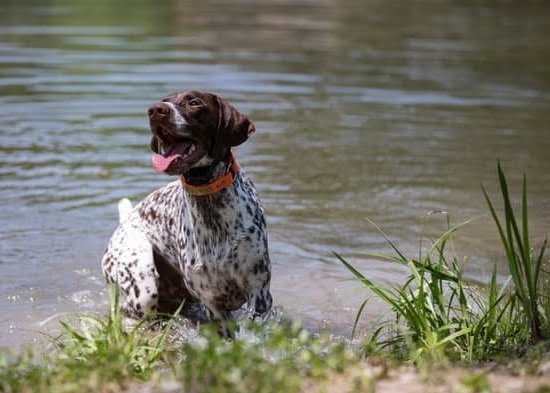Are you looking to teach your furry friend a fun and impressive trick? In this article, we will explore the benefits of training your dog to shake their body. From bonding with your pet to impressing friends and family, this simple yet entertaining trick can provide numerous advantages for both you and your canine companion. By understanding the positive impact of teaching your dog to shake their body, you can begin the journey towards successful training.
As a responsible pet owner, it is important to prepare your dog for training in a safe and comfortable environment. Getting started with the training process involves setting the stage for success through patience, consistency, and understanding. With these essential elements in place, you can begin to establish a strong foundation for teaching your dog new tricks, including shaking their body on command.
Using positive reinforcement techniques such as treats and praise can be highly effective in encouraging desired behaviors in dogs. This method not only motivates them to learn but also strengthens the bond between you and your pet.
As we delve into the step-by-step process of training your dog to shake their body, keep in mind that patience is key when it comes to seeing results. With dedication and perseverance, you can overcome common challenges and celebrate the progress made by your furry companion.
Getting Started
Establish a Bond
The first step in preparing your dog for training is to establish a strong bond and relationship with them. Spend quality time with your pet, engage in regular playtime, and create a positive and nurturing environment. When your dog feels safe, loved, and secure, they’ll be more responsive and willing to participate in training activities.
Evaluate Your Dog’s Behavior
Before starting any type of training, take a moment to evaluate your dog’s behavior. Observe how they respond to basic commands such as sit, stay, and come. Understanding your dog’s current level of obedience will help you tailor the training approach to best suit their needs.
Provide Physical Exercise
Dogs that are well-exercised are often more focused and attentive during training sessions. Ensure that your dog gets plenty of physical activity through regular walks, playtime, and exercise. A tired but contented dog will be more open to learning new behaviors.
By taking these preparatory steps before diving into the actual training process, you’ll set yourself up for success when teaching your dog how to shake their body.
Basic Commands
Establishing a solid foundation for training is essential when teaching your dog to shake their body. Before diving into the specific steps for this trick, it’s important to ensure that your dog has a good understanding of basic commands. Here are some key commands to focus on before moving forward with teaching your dog to shake:
- Sit: Teaching your dog to sit on command is a foundational skill that can be built upon for more advanced tricks and behaviors.
- Stay: Training your dog to stay in place until given the release command will be crucial when teaching them to shake their body.
- Come: Having a reliable recall command will help keep your dog engaged and focused during training sessions.
In addition to these basic commands, it’s important to work on leash manners and impulse control with your dog before progressing to more complex tricks. By establishing a strong foundation of obedience, you’ll set both yourself and your dog up for success as you move forward with training.
Using positive reinforcement techniques such as treats, praise, and playtime can also be beneficial in reinforcing these basic commands. When your dog responds correctly to a command, be sure to reward them immediately with something they find rewarding. This positive association will help solidify their understanding of the desired behavior.
Lastly, consistency and patience are key when working on basic commands with your dog. Practice these skills regularly in different environments and gradually increase the level of distractions to ensure that your dog has a reliable understanding of each command before moving on to teaching them how to shake their body. Remember, every dog learns at their own pace, so be sure to tailor your training approach based on your individual pet’s needs and progress.
Positive Reinforcement
When it comes to training your dog to shake their body, positive reinforcement can be an incredibly effective tool. By using treats and praise to encourage the behavior, you can create a positive association for your dog and make the training process more enjoyable for both of you.
To begin, it’s important to choose high-value treats that your dog finds especially enticing. These treats should be small, bite-sized rewards that your dog can quickly consume and will be motivated to work for. Examples of suitable treats include pieces of cooked chicken, cheese, or commercial dog treats. It’s also essential to use verbal praise and enthusiastic physical affection as part of the positive reinforcement process.
When your dog successfully performs the behavior you’re looking for, immediately follow it with verbal praise such as “Good job.” or “Well done.” as well as gentle petting or scratching in their favorite spot.
By consistently pairing treats and praise with the desired behavior, your dog will learn to associate shaking their body with positive outcomes. Eventually, they will become more eager to perform the action in anticipation of receiving their reward, making the training process smoother and more enjoyable for both you and your furry friend.
In addition to using treats and praise during training sessions, it’s also important to incorporate these rewards into everyday interactions with your dog. Whenever your dog naturally shakes their body (even if it’s not on command), be sure to offer verbal praise and a treat if one is readily available.
This will reinforce the behavior even outside of formal training sessions and help solidify it as a regular part of your dog’s repertoire. With consistent use of positive reinforcement, you’ll find that teaching your dog how to shake their body becomes a fun and rewarding experience for everyone involved.
Step-by-Step Training
Teaching your dog to shake their body is a fun and interactive trick that can strengthen the bond between you and your furry friend. It also provides mental stimulation and helps with obedience training. In this section, we’ll break down the step-by-step process of teaching your dog to shake their body.
To begin training your dog to shake their body, you’ll first need to ensure that they have mastered basic commands such as “sit” and “stay.” This will provide a solid foundation for their learning and make it easier to build upon. It’s important to remember that every dog learns at their own pace, so be patient and consistent in your training approach.
Here are some steps to follow when teaching your dog how to shake their body:
- Start by getting your dog into a sitting position.
- Gently take one of their front paws in your hand and lift it slightly off the ground.
- As you do this, say the command “shake” or “give me your paw” in a calm and clear voice.
- If your dog offers any movement towards shaking their body, even just a slight lift of the paw, immediately praise them and give them a treat as positive reinforcement.
It’s important to repeat these steps consistently during short training sessions, gradually increasing the duration as your dog begins to understand what is expected of them. With patience and perseverance, your dog will eventually learn how to shake their body on command. Remember, every small step of progress should be celebrated with praise and rewards.
Troubleshooting
Resistance to the Command
Some dogs may initially resist or not fully understand the “shake” command. In these cases, it’s important to be patient and consistent with your training efforts. One common mistake dog owners make is repeating the command over and over again, which can lead to confusion. Instead, try using a hand gesture in conjunction with the verbal command to help your dog understand what is expected of them.
Another helpful tip is to incorporate the “shake” command into a series of other basic commands, such as sit or stay, before giving the treat. This can help reinforce the behavior and create a positive association with the action.
Lack of Interest
If your dog shows little interest or enthusiasm for learning how to shake their body, it may be due to lack of motivation. In these cases, try using high-value treats or toys as a reward during training sessions. Additionally, finding a quiet and distraction-free environment for training can help improve focus and engagement.
It’s also essential to keep training sessions short and enjoyable for your dog. Overly long or repetitive sessions can lead to boredom and disinterest. Incorporating playtime before or after training can also help create a positive association with learning new commands.
Inconsistency in Execution
Consistency is key when it comes to training your dog to shake their body. If there are multiple members in your household involved in training, it’s crucial that everyone uses the same command and hand gesture consistently. Inconsistency can lead to confusion for your pet and slow down progress.
To address this challenge, consider scheduling regular family meetings to discuss and practice training techniques together. Using visual aids such as posters or written reminders can also help ensure that everyone is on the same page when it comes to teaching your dog new commands.
By addressing these common challenges through patience, consistency, and positive reinforcement, you can overcome obstacles in teaching your dog how to shake their body effectively. Remember that every dog learns at their own pace, so it’s essential to remain patient and persistent throughout the training process. With dedication and practice, you will soon celebrate success in seeing your furry companion master this fun trick.
Practice Makes Perfect
Incorporating daily training sessions into your routine is crucial when teaching your dog to shake their body. Consistency is key when it comes to training, and setting aside time each day to work with your dog will help reinforce the behavior you are trying to teach. By incorporating regular training sessions, you can ensure that your dog is consistently practicing and improving their ability to shake their body on command.
One effective approach to daily training sessions is to integrate them into your everyday activities with your dog. For example, you can practice the shaking behavior before meal times or during play sessions. This not only provides opportunities for reinforcement but also makes the training feel like a natural part of your daily routine for both you and your dog.
It’s important to keep these training sessions short and engaging. Dogs have a relatively short attention span, so aim for sessions that are no longer than 10-15 minutes at a time. This will help prevent your dog from becoming bored or frustrated and will maintain their focus on learning the behavior you’re trying to teach them.
| Training Approach | Benefits |
|---|---|
| Integrating training into everyday activities | Makes training feel natural and reinforces behavior |
| Keeping sessions short and engaging | Prevents boredom and frustration while maintaining focus |
Celebrating Success
Training your dog to shake their body can be a fun and rewarding experience for both you and your furry friend. Once your dog has mastered the basic commands and you have established a foundation for training, it’s time to focus on celebrating their success and rewarding their progress. Positive reinforcement is key in encouraging the behavior you want to see in your dog, so it’s important to recognize and reward their efforts.
One of the best ways to celebrate your dog’s success is by offering verbal praise and physical affection. When your dog successfully shakes their body on command, be sure to shower them with excitement, praise, and gentle pats. This positive reinforcement will reinforce the behavior and encourage them to continue performing the trick.
In addition to verbal praise, treats can also be an effective way to reward your dog for successfully shaking their body. Choose special treats that your dog loves and reserve them specifically for training sessions. By providing a tasty incentive, you are reinforcing the behavior and motivating your dog to perform the trick consistently. Remember that consistency is key in training, so make sure to reward your dog every time they successfully shake their body on command.
| Method of Reward | Description |
|---|---|
| Verbal praise | Show excitement, praise and give gentle pats as a form of positive reinforcement |
| Treats | Use special treats that your dog loves as an incentive for performing the trick consistently |
Conclusion
In conclusion, training your dog to shake their body can be a rewarding and enjoyable experience for both you and your furry companion. By understanding the benefits of teaching this behavior, preparing your dog for training, and establishing a foundation with basic commands, you can set the stage for success. Using positive reinforcement, step-by-step training, and daily practice sessions can help solidify the behavior and address any challenges that may arise.
It’s important to remember that patience and consistency are key when it comes to training your dog. Celebrating small victories along the way and recognizing your dog’s progress can also play a significant role in their success. Whether you’re using treats or praise as a reward, finding what motivates your dog is crucial in encouraging the desired behavior.
Incorporating the techniques outlined in this article into your daily routine will not only strengthen the bond between you and your dog but also provide mental stimulation and physical activity for them. Remember that every dog learns at their own pace, so it’s essential to remain patient and persistent throughout the training process. With time, dedication, and a positive attitude, you’ll find that teaching your dog to shake their body can be an achievable goal.
Frequently Asked Questions
How Do I Teach My Dog to Shake His Body?
Teaching your dog to shake his body can be a fun and rewarding experience. Start by getting your dog to sit, then gently take his paw in your hand and give the command “shake.” Reward him with a treat and lots of praise when he lifts his paw.
How Do You Teach a Dog to Shake on Command?
To teach a dog to shake on command, start by holding a treat in your closed fist and letting him sniff it. Say “shake” and tap on his paw lightly until he lifts it up. Then reward him with the treat and praise. Repeat this process until he associates the word “shake” with lifting his paw.
Can All Dogs Learn to Shake?
Not all dogs may learn to shake, as some breeds may have difficulty with this command due to their physical limitations or temperament. However, with patience, consistency, and positive reinforcement, most dogs can be taught to shake hands. It may just take more time and effort with some dogs compared to others.

Welcome to the blog! I am a professional dog trainer and have been working with dogs for many years. In this blog, I will be discussing various topics related to dog training, including tips, tricks, and advice. I hope you find this information helpful and informative. Thanks for reading!





